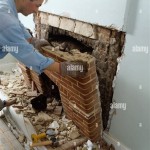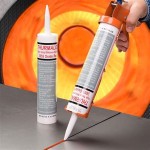Fireplace Stone Hearth: A Comprehensive Guide
The fireplace serves as a focal point in many homes, offering warmth, ambiance, and a gathering place for family and friends. Integral to the functionality and aesthetic appeal of a fireplace is the hearth. A stone hearth, in particular, provides a durable, heat-resistant, and visually striking element that elevates the entire fireplace design. This article delves into the various aspects of fireplace stone hearths, covering their benefits, types, installation considerations, maintenance, and design options.
Benefits of a Stone Hearth
A stone hearth offers numerous advantages over other materials, such as concrete or brick. These advantages relate to durability, safety, aesthetics, and value.
One of the primary benefits of a stone hearth is its superior durability. Natural stone is incredibly resilient and can withstand high temperatures generated by a fireplace without cracking or warping. This resistance to heat ensures a longer lifespan compared to other hearth materials. Furthermore, stone's inherent strength makes it resistant to scratches, dents, and other forms of physical damage, ensuring that the hearth maintains its appearance for years to come.
Safety is paramount when dealing with fireplaces, and a stone hearth plays a crucial role in preventing fire hazards. The non-combustible nature of stone provides a protective barrier between the fire and the surrounding floor, preventing sparks and embers from igniting flammable materials like carpets or wood flooring. This safety feature is particularly important in homes with young children or pets, where accidental contact with the fireplace is more likely. The thermal mass of stone also helps regulate heat, preventing the surrounding area from overheating.
From an aesthetic perspective, a stone hearth offers a timeless elegance that complements a wide range of architectural styles. The natural variations in color, texture, and veining found in stone create a unique and visually appealing feature that enhances the overall ambiance of the room. Whether the design is rustic, contemporary, or traditional, a stone hearth can be seamlessly integrated to create a cohesive and stylish look. The availability of various stone types, each with its distinct characteristics, allows homeowners to customize their hearth to match their personal preferences and the existing décor.
The addition of a stone hearth can increase the value of a home. Its durability, safety features, and aesthetic appeal are all attractive qualities for potential buyers. A well-designed and properly installed stone hearth can be viewed as a significant upgrade, adding to the overall perceived value of the property. Furthermore, the longevity of a stone hearth minimizes the need for future repairs or replacements, making it a cost-effective investment in the long run.
Types of Stone Used for Hearths
The selection of stone for a fireplace hearth depends on several factors, including aesthetic preferences, budget, and desired durability. Several types of stone are commonly used for hearth construction, each possessing unique characteristics that make it suitable for different applications.
Granite is a popular choice for hearths due to its exceptional durability and heat resistance. It is an igneous rock formed from cooled magma, resulting in a dense and hard material that can withstand extremely high temperatures. Granite is available in a wide range of colors and patterns, from classic speckled designs to more contemporary solid colors. Its non-porous nature makes it resistant to staining and easy to clean, making it a practical option for high-traffic areas.
Marble is prized for its elegant appearance and smooth texture. It is a metamorphic rock formed from limestone or dolomite, characterized by its distinctive veining and subtle color variations. While marble is not as heat-resistant as granite, it is still suitable for hearths, particularly in fireplaces that are not used for extended periods of time. Marble requires more careful maintenance to prevent staining and etching, but its luxurious aesthetic makes it a desirable choice for many homeowners.
Limestone is a sedimentary rock composed primarily of calcium carbonate. It has a softer, more porous texture compared to granite and marble, giving it a more rustic and natural appearance. Limestone is available in a range of neutral colors, from light beige to dark gray, and its earthy tones complement a variety of architectural styles. While limestone is not as resistant to heat and staining as other stone types, it can be sealed to improve its durability and longevity.
Slate is a fine-grained metamorphic rock known for its distinctive layered appearance and dark, earthy tones. It is a durable and heat-resistant material that is well-suited for hearth applications. Slate is available in a variety of textures, from smooth and polished to rough and natural, allowing for a range of design options. Its resistance to water and staining makes it a practical choice for fireplaces that are frequently used.
Soapstone is a metamorphic rock composed primarily of talc, giving it a soft and smooth texture. Despite its softness, soapstone is incredibly dense and heat-resistant, making it an ideal choice for hearths. Soapstone is known for its ability to absorb and radiate heat evenly, providing a consistent and comfortable warmth. It is available in a range of dark gray and green colors and is relatively easy to maintain.
Installation and Maintenance Considerations
Proper installation is crucial for the longevity and safety of a stone hearth. Furthermore, regular maintenance is essential to preserve its appearance and structural integrity. These considerations should be addressed to ensure a safe and lasting hearth.
The installation process typically involves preparing the subfloor, laying a mortar bed, and setting the stone tiles or slabs. The subfloor must be level and structurally sound to provide a stable base for the hearth. A mortar bed is then applied to create a bond between the subfloor and the stone. The stone is carefully placed on the mortar bed, ensuring that it is level and properly aligned. Grout is then applied to fill the gaps between the stones, providing a seamless and aesthetically pleasing finish. It is recommended to hire a qualified professional for stone hearth installation to ensure that the job is done correctly and safely.
Sealing is an important step in protecting the stone from staining and damage. A sealant is applied to the surface of the stone to create a barrier against moisture, dirt, and other contaminants. The type of sealant used will depend on the type of stone and the desired level of protection. It is important to follow the manufacturer's instructions when applying sealant and to reapply it periodically as needed.
Regular cleaning is essential to maintain the appearance of a stone hearth. The frequency of cleaning will depend on the amount of use the fireplace receives and the type of stone used for the hearth. For general cleaning, a mild soap and water solution can be used to wipe down the surface of the stone. Avoid using harsh chemicals or abrasive cleaners, as these can damage the stone. For stubborn stains, a specialized stone cleaner may be required.
Inspecting the hearth regularly for cracks or damage is crucial for safety. Over time, the mortar joints may crack or crumble due to heat exposure and normal wear and tear. Any cracks should be repaired promptly to prevent further damage and to ensure that the hearth remains structurally sound. It is also important to inspect the area around the hearth for any signs of fire damage, such as charring or discoloration.
Preventative measures can help extend the life of a stone hearth. Using a fireplace screen can prevent sparks and embers from landing on the hearth, reducing the risk of fire and staining. Avoiding the use of excessive heat can also prolong the life of the stone. Overloading the fireplace with wood or burning excessively hot fires can cause the stone to crack or warp. By following these preventative measures, homeowners can enjoy the beauty and functionality of their stone hearth for many years to come.

Stone Fireplace Ideas Hearth Slab Wrought Iron And Glass Doors Remodel

Professional Stonework Stone Fireplace Surround Hearths

Warm Up This Winter With A Natural Stone Fireplace

Stone Hearth Fireplace Old World Stoneworks

A Stonehouse York Reclaimed Stone Hearth Fireplaces

Some Stone Fireplace Surround Ideas You Ll Love Southwest Supply

65 Best Stone Fireplace Design Ideas To Ignite Your Decor Cottage Farmhouse Designs

Natural Stone Hearths Customizable Grey Sandstone

Stone Fireplaces

Fireplaces Install Gallery Energy Resources
Related Posts








